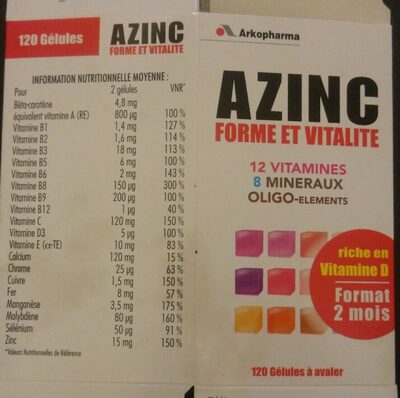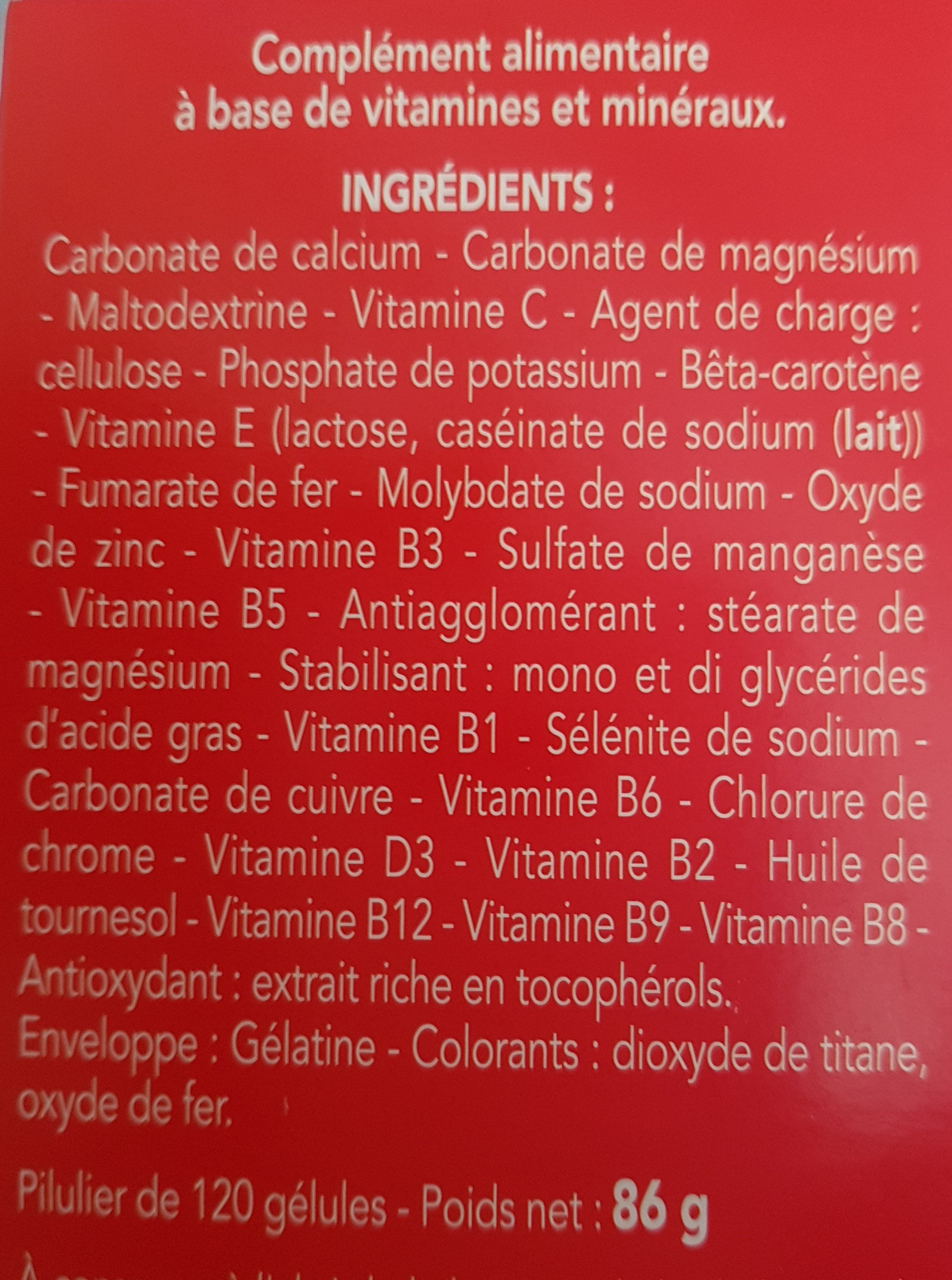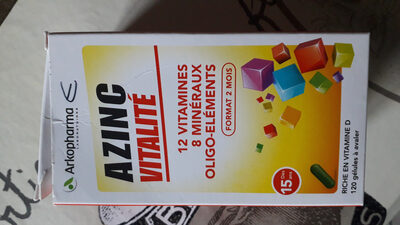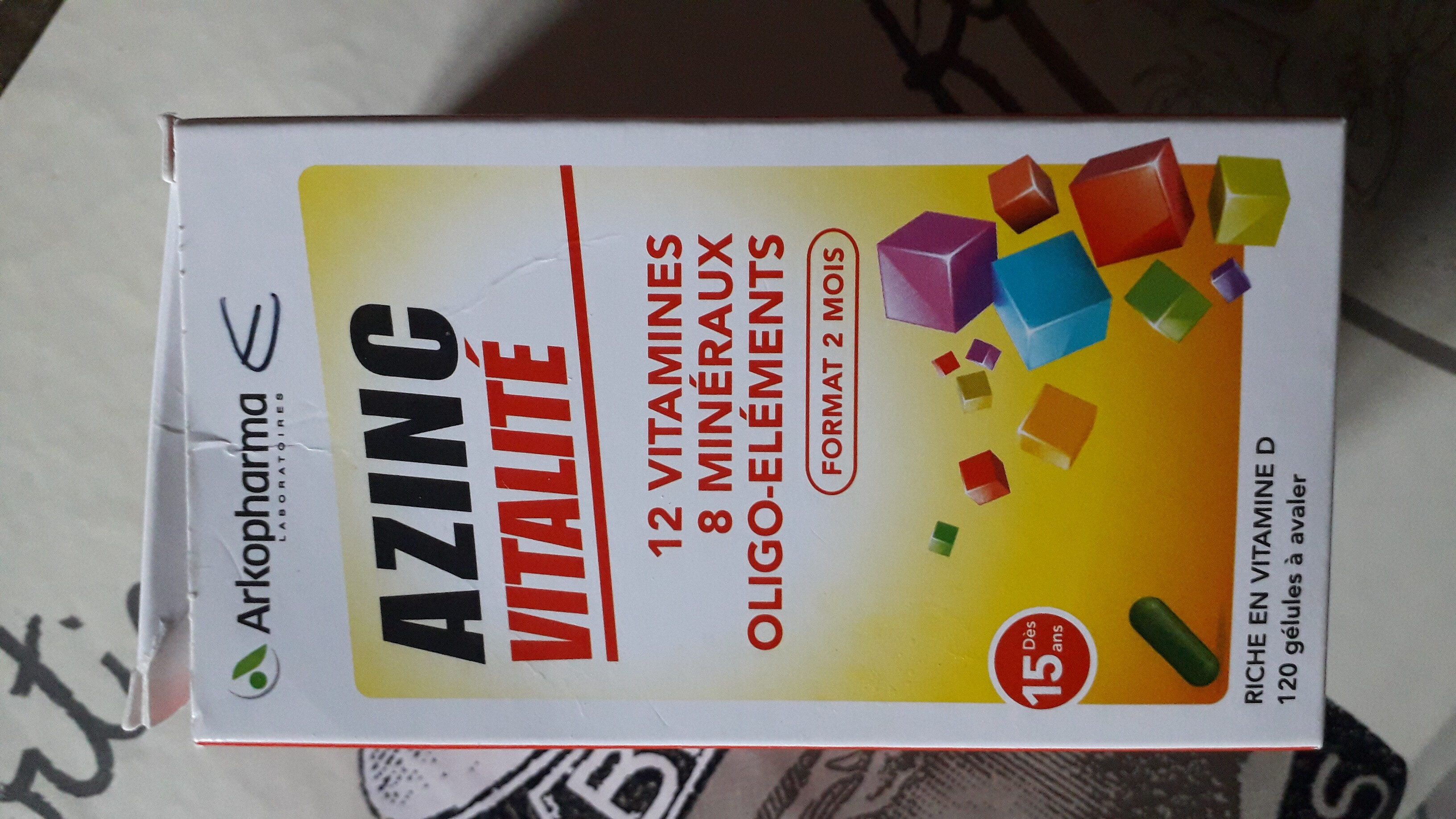AZINC - Forme et vitalité - AZINC laboratoire arkopharma - 87 g
This product page is not complete. You can help to complete it by editing it and adding more data from the photos we have, or by taking more photos using the app for Android or iPhone/iPad. Thank you!
×
Barcode: 3401540148493 (EAN / EAN-13)
Common name: Vitamines en gélules
Quantity: 87 g
Packaging: fr:Flacon plastique
Brands: AZINC laboratoire arkopharma
Categories: Dietary supplements, Vitamins
Labels, certifications, awards:
Green Dot
Link to the product page on the official site of the producer: https://fr.arkopharma.com/products/azinc...
Stores: Pharmacie auchan porte d'Espagne
Countries where sold: France
Matching with your preferences
Report a problem
Data sources
Product added on by openfoodfacts-contributors
Last edit of product page on by emiliemarie.
Product page also edited by anthony66, gg61, mbe, packbot, spotter, teolemon.










